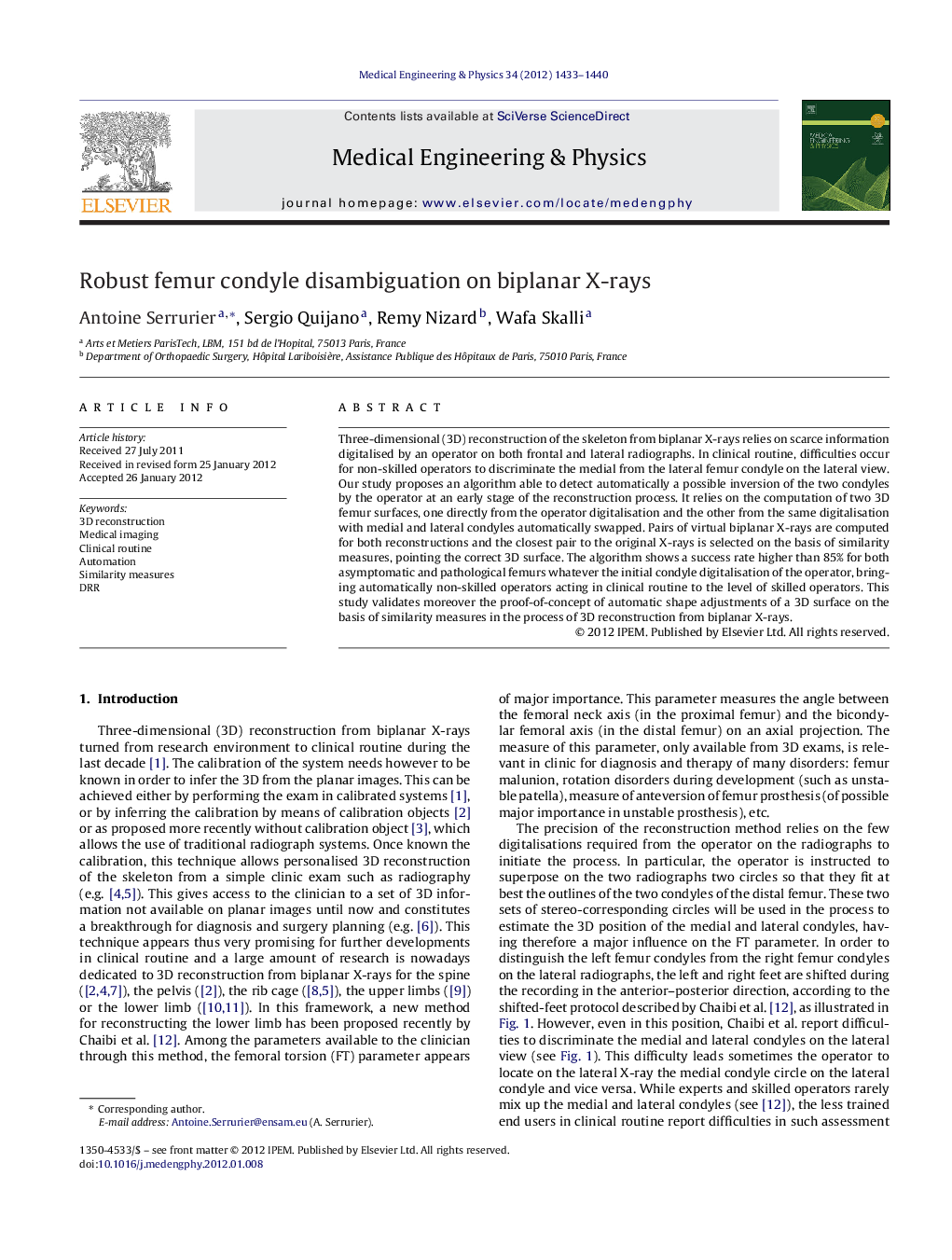| Article ID | Journal | Published Year | Pages | File Type |
|---|---|---|---|---|
| 876341 | Medical Engineering & Physics | 2012 | 8 Pages |
Three-dimensional (3D) reconstruction of the skeleton from biplanar X-rays relies on scarce information digitalised by an operator on both frontal and lateral radiographs. In clinical routine, difficulties occur for non-skilled operators to discriminate the medial from the lateral femur condyle on the lateral view. Our study proposes an algorithm able to detect automatically a possible inversion of the two condyles by the operator at an early stage of the reconstruction process. It relies on the computation of two 3D femur surfaces, one directly from the operator digitalisation and the other from the same digitalisation with medial and lateral condyles automatically swapped. Pairs of virtual biplanar X-rays are computed for both reconstructions and the closest pair to the original X-rays is selected on the basis of similarity measures, pointing the correct 3D surface. The algorithm shows a success rate higher than 85% for both asymptomatic and pathological femurs whatever the initial condyle digitalisation of the operator, bringing automatically non-skilled operators acting in clinical routine to the level of skilled operators. This study validates moreover the proof-of-concept of automatic shape adjustments of a 3D surface on the basis of similarity measures in the process of 3D reconstruction from biplanar X-rays.
